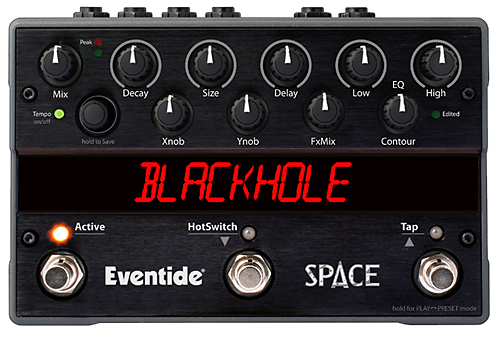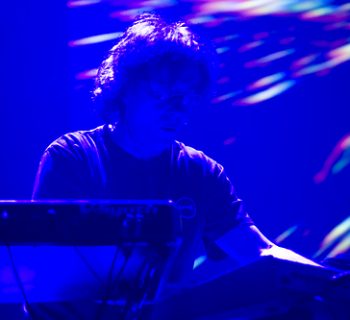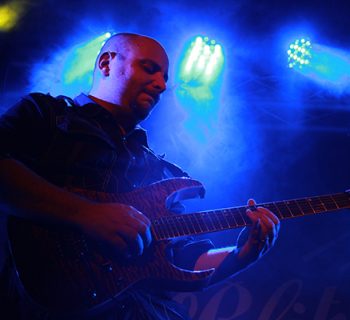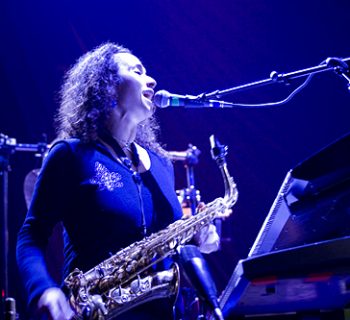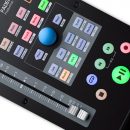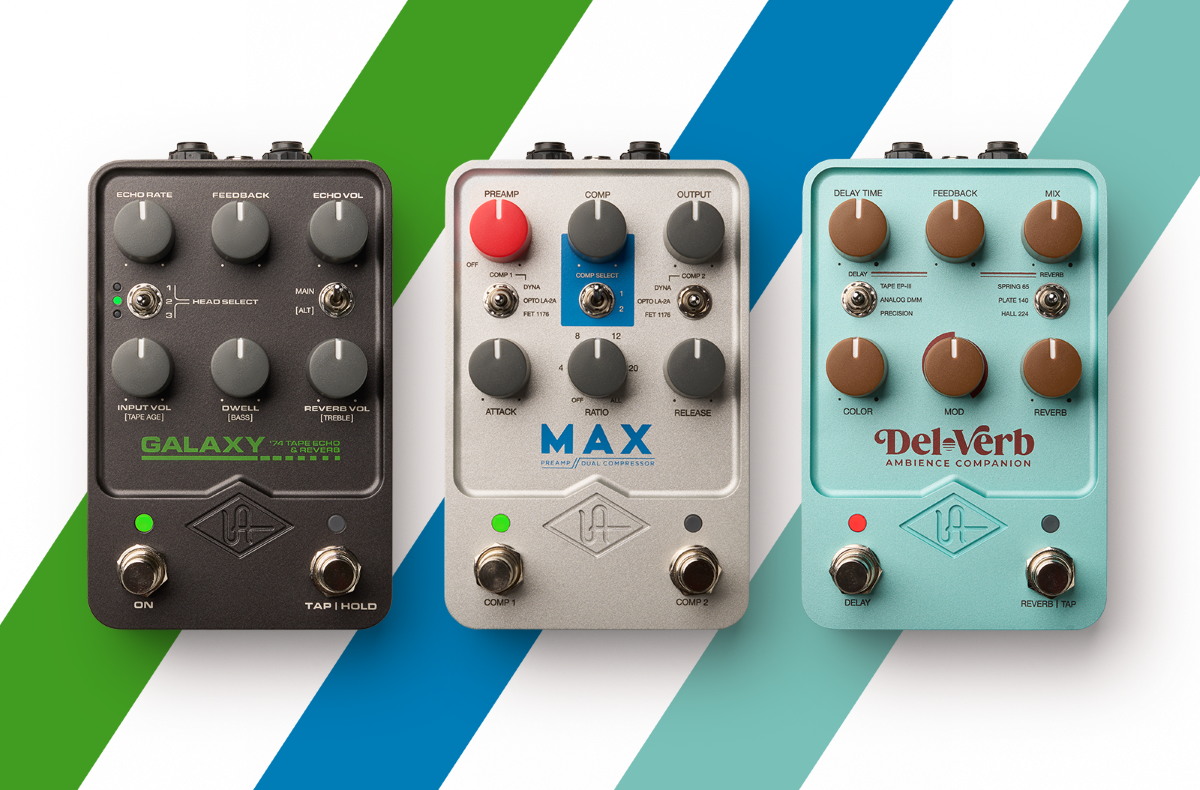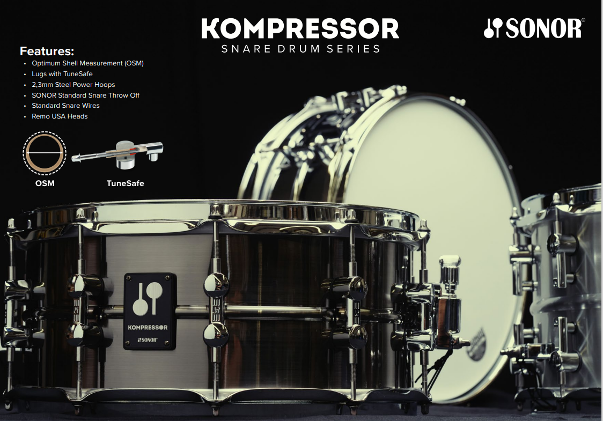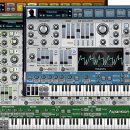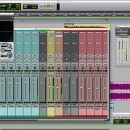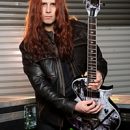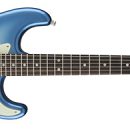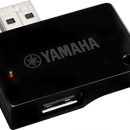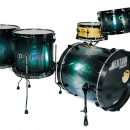How can we use Jordan Rudess to the maximum and create a better Dream Theater?
MPc: It seemed obvious from the very first listen of this album that there was a more collaborative songwriting process at work than on previous Dream Theater records. Maybe you could tell me a little bit about how the songwriting took place on the new record.
JR: The first thing that’s of interest is that John Myung, who’s been very, very quiet for all of the albums basically since I joined the group, really was very energized coming into this project. He was so inspired, and before we went into the studio he would send us riffs every day, and lyrics, and it was just great to see him want to really take a strong part in the whole process. That was very exciting for everybody. He also wrote the lyrics, with John Petrucci, to one of the songs, “Breaking All Illusions,” so that was great. That kind of got things started in a new way.
In some ways, things really didn’t change, because John Petrucci and I have had this great writing chemistry through the years, and we maintained that into the new album, but of course, we got to focus in on that even more this time. It was mostly us just kind of writing all this music. It was a very focused process. We really took our time. A lot of times I would just go and I would grab my music paper and I would sit and just develop an idea. The vibe was really, really good. It was a very important album for us obviously, because of this big change of not having Mike Portnoy with us. We wanted to really do our very best, so that’s what we set out to do.
MPc: When you and John write, do you guys spend time getting together, like at each other’s home studios, jamming together?
JR: Well, we do it actually when we’re in the studio together. We entertained the idea of actually getting together this time, maybe at his house or my studio, and just hashing through things before we all got together. But that’s not what happened. That’s never really what happens in Dream Theater world. [laughs] We book the time in the studio, we’re going to go in and we’re going to record from this date to that date, and we go in and we start to write, and we just do that. Most of the things were written actually while we were all together. Some things John wrote when he was at home and brought them in. For the most part, I wrote what I wrote in the studio, this time, with everybody around. So it all just comes together. You walk into the studio and everybody is there and you hope for the inspiration, and you just go with it.
MPc: Keyboards play a very prominent role on A Dramatic Turn of Events. There’s a lot of piano and orchestration on this record, more so than the last few CDs.
JR: Well, I was thinking for a while about the role that the orchestral sounds would play in this album, and I wanted it to kind of reach another level. Dream Theater always has orchestral elements, so I was thinking, what can we do to bring this up a notch? So the first thing I did was I invested in the Vienna Symphonic library, which is a wonderful orchestral library with really great sounds. And I have a lot of orchestral sounds already, so part of it was, it was just inspiring to kind of put my energy towards the idea of upping the orchestral sounds. Having those additional sounds within my sonic palette really helped me to paint a new kind of orchestral picture.
I ended up using the Vienna Symphony a lot, but what I do is, I’ll mix the sounds together. When I record, and this is a good thing and a bad thing, good in the sense that I can get to whatever sound I want... when I record, I have tons of keyboards in the studio, and I have my computer with all this software. Sometimes I’ll borrow stuff just for the album, because I just want to have something around, and it’s just a fun sonic keyboard party for me. The good part about that is I can reach over to my Kurzweil synthesizer and I can call up one of their string patches [on the] PC3. It has a lot of great onboard patches so I can get to something really quickly. And then I’ll go to [Native Instruments] Kontakt and I’ll call up one of the native instrument, like factory orchestral sounds. I’ll reach over and do Vienna Symphony, and then my [Korg] Kronos will have a good sound.
So whatever it is, I just put it together, and I like to mix them. A lot of times I’ll find a marcato sound, like in the Yamaha Motif, and I’ll say, wow, if I blend that with the Kronos and add a tiny bit of this violin sound from the Vienna, that’s my one sound, and I’ll lay that down as a track. Then I’ll go back and I’ll do the woodwinds, or I’ll do the brass. So that’s my fun in the studio. I love to do that. I love to put on the headphones. Very often I’m working with headphones so I can get really fine-tuned into the color of the sound and make it happen.
We also took time to do a lot of an orchestration approach instead of like… there’s a certain magic in being able to just play the part, the whole thing. Let’s say it’s a big orchestral part: big, full chords. There’s a definite magic in being able to have a sound that just plays well on the keyboard. There’s a company called Sonovox that does orchestral sounds that are extremely playable, and I’ll use those maybe to lay down almost like a bed of a track, and then I’ll go in and do something more specific. So I kind of bounce back and forth between very specific orchestral articulations and just finding something that plays well.
![]()
Of course, when it comes time to play it live, that’s where what I said was bad. Not because the end result is bad, but because it’s a whole lot of work for me. Because, here I am in the studio with every toy in the world, and then I have to go, okay, well, what did I do in the studio? And I depend on all the notes taken from the studio, and this time maybe the notes were not as great as they could have been. So yes, I have to sit there and I have to do all this work to get the whole thing happening again, in this case on the Kronos, which is a fantastic instrument, and is capable to do this job. What I do is I sit there, and some things I can synthesize, I can call up patches and tweak them and change and do stuff, or add two different sounds together to create what I created maybe on Omnisphere, or a combination of Omnisphere and Alchemy. But other things not, and in that case, I’ll sample it. I’ll sample it right into the Kronos. I’ll take my own roots. Maybe I’ll take four or five roots across a keyboard and just make it happen.
MPc: Has the Kronos replaced the OASYS for you?
JR: Yeah, the Kronos has, although I still use the OASYS as a programming tool in the studio, because I have a little bit of trouble with the screen. My eyes are not what they used to be, so I have an easier time looking at the OASYS screen, so then I do this nice little conversion process and end up being able to perform on the Kronos, which is the next level for Korg. It’s really phenomenal live machine.
MPc: Great.
JR: That was the short answer. Now let me extend that a little. [laughs]
They want to know if we can continue doing what we’re known to do.
MPc: The keyboards also have a much more prominent place in the mix, and what’s interesting about that is, the band hasn’t lost any of the heaviness to the guitars, but there’s a lot more presence to your keyboard sounds.
JR: Yeah. Well, we should definitely mention Andy Wallace, because he played such a big part in allowing all the instruments to really be heard, and all the instruments to have their sonic space. He had a lot of respect for everybody’s part, and was just really able to do it right. I mean, in the past what I would find personally is that I would play a huge sound, like this choir sound that everybody is telling me, oh, what a great choir sound on this new album. It’s the same sound I used on the last album, but all of a sudden they hear it, so there’s something going on. What happens is large sounds can’t really survive so much in the same space. You have to do interesting things with the frequencies, and pull some frequencies out to allow other ones to survive. And that skill is something that’s so intense and so vital to a band like Dream Theater, where the guitars are huge.
So in the past, John would play a tremendous bar chord, and my huge keyboard sound would shrink to almost nothing. It was kind of frustrating for me. But on this album, between Andy Wallace’s skills and also taking a different approach from the beginning and the way that we orchestrated — and this is something that John came forward to me before we even started and wanted to talk about the role of the keyboards. How were we using the keyboards? How can we use Jordan Rudess to the maximum and create a better Dream Theater, which I thought was so cool. Again, this was an opportunity for us to rethink. A big change happens, okay, let’s think about it.
So we decided on some orchestrational ideas that really helped in that as well. One of them is that, where in the past we might be tempted to just double the line, like just put a snarling pig sound with the heavy guitar line, in this case we were like, okay, well, what can I do to add a really cool keyboard element and make it even cooler? So it might have involved creating a different kind of a part that would go against it, or maybe a different kind of a sound that worked in conjunction with the other heavy sounds, that stood out on its own. So yeah, there was a lot of attention paid to that matter. It’s great to hear people say that, because it’s definitely one of the things we talked about from the beginning, in the role of the instruments and the orchestration, all the way through to the way this album was mixed and then mastered. So there you go.
MPc: Let’s talk a bit more about some of the sounds used on A Dramatic Turn of Events.
JR: One of my favorite synthesizers is basically available through my computer, and that’s Omnisphere. It’s a wonderful, wonderful application that just has amazing sounds that actually help me to construct a lot of the sonic goodness that’s on the Dream Theater album. Those introductions that you hear, my friend Eric Persing, who owns Spectrasonics is just, I call him the sonic God. He supervises and runs that company, and it does some wonderful things that go into those Spectrasonics soft synths, so I use that a lot. I also love Alchemy by Camel Audio, and I use a lot of Native Instruments, and the Vienna Symphony stuff, which is wonderful.
And of course, the piano sound that everybody thinks is such a wonderful piano, for years now it’s been—
MPc: Ivory.
JR: Yeah, my buddy Joe Ierardi’s company, which is called Synthogy, and his software is called Ivory. So those are some staples that do it. And I had my favorite keyboards there, too. I had the [Roland] V-Synth and the Kronos and I had a Motif there, and I also borrowed a wonderful Nord Stage keyboard for the organ sounds. I had some good stuff.
But I would say of all of those, the piano sound is so important. Ivory and Omnisphere, those are some major things.
MPc: What were you using to generate your Mellotron sounds? There was a lot of Mellotron-sounding stuff.
JR: Well, I have a Memotron keyboard, and that has some very authentic Mellotron sounds in it. I also used some Omnisphere stuff. They have some old samples of like, chamberlains and orchastrums, and all these antique keyboards. I tend to blend things in a lot, so I’ll take colors, maybe a Mellotron off of Omnisphere and mix it with Memotron and tweak it a little bit myself. I also do a lot where I’ll layer the Mellotron sound with a certain kind of choir, or the organ. I don’t know, there’s a lot of crafting going on.
MPc: Were the choral voices that we hear on the record coming from Omnisphere?
JR: Yeah, again, some of my very favorite choral sounds are coming from Omnisphere. The heavy vibrato choir patch on there is incredible. I remember one time Paul Northfield, our very faithful and capable engineer, said to me, “It’s like the soprano is right in my face, it’s so up front and so right sounding.” So yeah, I used that a lot, and that gets me through those big choir moments for that heavy vibrato type of thing, but also for the more 10cc-ish kind of smooth vocal sound. It’s got a wonderful boys choir sound.
MPc: And who supplied the indigenous belching voice? [laughs]
JR: That’s an Omnisphere sound.
MPc: Did you use any sounds off your iPhone for this release?
JR: Actually, you’re the first person that I’m sharing this with, but there’s a little app that I used in one of those sonic elements, I think the “Bridges in the Sky” track, where, I think, the app is called Bowls. They had Tibetan bells on there. You’d basically call up the screen and on the screen are all these assorted gong-ish kind of ethnic bowls. I had that out and I used that to play some of the bell sounds on there, which sounded amazing. And then I also used my own Morphwiz on a couple of the tracks as well. Samplewiz was not quite there.
MPc: Maybe we should shoot a short video clip when we’re done with this.
JR: Yeah, for sure we can pull this out, no problem.
MPc: Jordan plays the bowls, live at Starbucks. [laughs]
JR: Exactly. We can do that. [laughs]
Jordan Rudess gives us an exclusive iPhone demo!
MPc: So there are a lot of moments on this record where you and John are back to doing a lot of dueling leads, and harmonized leads with each other. When you guys write those parts, do you score it, and each learn from what you’ve written out? Or, do either of you just learn by ear when you create those?
JR: They go down in different ways. We’ve taken many different approaches. But one of the ways that works pretty well for us is for John — John Petrucci is obviously a master guitarist, and his brain thinks very well in patterns. Like in that song, “Lost, Not Forgotten,” where it’s kind of like this wild ride that almost feels like somebody is tickling your or something like that, it’s just so crazy. He latched on to a really, really cool pattern, and he realized that if he just moved it from place to place, it was this thing that kind of just kept kind of going. So we went with it, and it was cool.
One of the ways we work is John will put something out there and say, “Something like this would be really cool.” I’ll say, “Well, don’t worry about it, just write it, and then I’ll come up with some kind of a harmony to it.” Which is often a lot more than it might really seem, because what I try to do is sometimes take it out of the typical type of thing where you might just play in thirds, and I’ll find a line, my own line, that goes against whatever his pattern was. So in that song, it’s a great example, where it’s almost like at some point it’s like three part harmony going on in this wild, moving line. I think one of them is mostly in thirds, and the other one is actually moving around so it creates this really unusual effect. That’s one way we work.
Another way is, the riffs will come more from a keyboard perspective, which is his favorite thing, because of course, playing fourths and fifths on the guitar is not the easiest thing in the world. So I’ll offer something, and it can come from either of us and shape itself like that.
MPc: “On the Backs of Angels,” that song sounded like the one track that could have been a holdover from either of the previous two Dream Theater releases. But starting with track two, leading in with an electronic drum loop, that was sort of like, wow, here’s new Dream Theater. “On the Backs of Angels” seemed like more of what you guys had been up to previously.
JR: I can relate to that comment. I think that one of the things we wanted to do with making this album was look at what were the elements that were most important to us about Dream Theater, things that we thought were really vital to the sound of our group. This transition was a chance to really rethink a lot of things, and that we did. So that track was very much kind of almost in a safe zone, I guess, if you will. We wanted to make it like classic Dream Theater.
MPc: Familiar.
JR: Yeah, that’s why we actually chose that to come out first, too, because we felt like, you know what? It was a big time for Dream Theater. All eyes are on us. They want to know if we can continue doing what we’re known to do. We felt like that track just is a [classic] Dream Theater track. It sounds like, definitely, it comes from where we’ve been. And then there are other tracks, as you said, where we pushed it a little more and we changed things up and made it sound a little bit new. But it wasn’t our job at this point to totally reinvent Dream Theater. I think we took it upon ourselves to more kind of come together again and figure out what it is that makes us really strong, and I think the “Angels” track is a reflection of that kind of thinking.
He can do things with his hands and body that nobody else can do.
MPc: How do you get the percussive keyboard sounds? It features in a lot of songs in parts where you’re playing pretty fast, melodic runs within the basic chord progressions.
JR: Well, I’m not quite sure exactly what part you’re talking about, but I think I know the kind of thing you’re talking about.
MPc: It’s one of your primary sounds that is not piano, Mellotron, or organ. It almost sounds like it has a little spacey edge to it. The notes sort of have a decay that lingers, almost like a ‘70s sci-fi sound effect.
JR: Yes, right, I know exactly what you’re talking about. A lot of times my sounds will seem like just one sound, and if I go back to it after a little while and just play a sound or hear it, I’ll go, oh, which sound is that? But then when I go to it, I realize it’s like eight, nine, ten layers. You might have a marimba in it, a fast synthesizer, and a touch of a little voice attack. It might have some kind of a string, like a marcato string thing, just to give it this interesting, original kind of attack sound. I kind of got into that again, like back in the days of Rudess Morgenstein, or even before that, and that’s been a signature of mine.
MPc: The song, “This is the Life,” definitely conjured up a little bit of a Pink Floyd vibe with the orchestration in that song. Can you tell me anything about the development of that song?
JR: Yeah, John wrote most of that song, and he actually had sent a demo of that early on, even before we got into the studio. And then when we got into the studio, he was gracious enough to open it up to the band, and I ended up writing a nice bridge for it, and we kind of re-orchestrated it and did our Dream Theater thing to it. It morphed into something that was definitely related to what he had, but a little bit different. It was nice, it was a little bit of a different flavor, very melodic, and I tried to get really open sounds. Even when it’s big, the sounds are very spacious. That was the approach. So if you’re saying it sounded a little Floyd-y, that’s definitely what we wanted.
MPc: The last real thing to talk about is working with Mike Mangini. Tell me about the experience. I’ve read that you guys wrote the material before you picked the drummer—
JR: No, that’s not really accurate. We picked the drummer, and then we went into the studio, and we decided that he wouldn’t be part of the writing process, but we knew who it was going to be.
MPc: Okay, so tell me about the experience. What did it feel like actually starting to play through these parts with a new guy?
JR: Well, yeah, the actual playing all together was done when we hit the road, which was interesting, because when Mike [Mangini] came into the studio to record his parts, we had scratch parts done. We had our scratch tracks down, and he had just a rough layout of what he was supposed to do or think about for his parts, based on drum machine stuff. So he came in and he worked with John Petrucci, and those two guys went at it. I stopped in a couple of times, but what I could see, and according to John Petrucci, it was such a pleasure. Because the guy, he would hear our scratch parts and then say, “Okay, how about this?” and then we’d talk about it. Maybe they would change it. He was very flexible. They ended up coming up with what I think are just amazing drum parts. He has a really great spirit, relaxed. The guy is a phenomenal drummer. Watching him play is just sometimes almost funny, because people are not supposed to do that with their bodies. [laughs]
But what I love about Mike Mangini, and I think what can get really misinterpreted, and I predicted this was going to happen, is that because he has such an incredibly high level of technique and he can do things with his hands and body that nobody else can do, people will make the pretty serious mistake of calling him a technician, rather than a soulful musician. I think that happens a lot in our music world, where people who maybe are not as skilled will look at somebody else who is and say, “Oh, they’re just technical.”
I just want to make it very clear that somebody like a Mike Mangini, these people who have a high level of technical skill, aren’t always just technicians. Mike Mangini is a phenomenal musician. He has an incredible feel, and I found out all about that not only by what he played on the album, but by going out and playing live with him, and feeling what the music was like every night. Just this kind of grounded, locked grove that he has, which totally has nothing to do with his chops that he has, but the ability to groove like that, that’s a whole other thing. That’s to be noticed. So it’s been a great experience with him. He’s a very nice guy. He’s funny; he’s got a good heart. He’s doing a great job. We like him a lot, and he’s helping us to really bring Dream Theater into the future.

